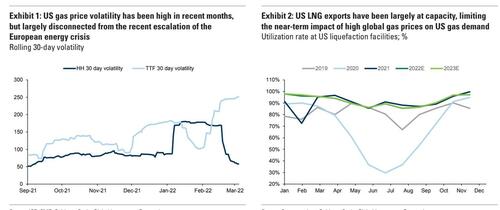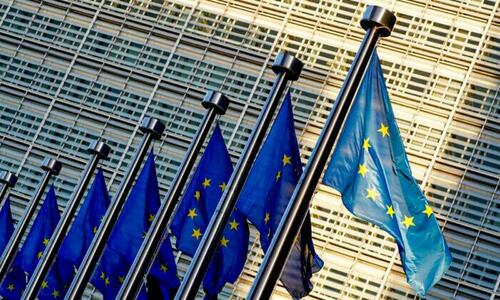Authored by John W. Whitehead & Nisha Whitehead via The Rutherford Institute,
“Big Brother does not watch us, by his choice. We watch him, by ours…. When a population becomes distracted by trivia, when cultural life is redefined as a perpetual round of entertainments, when serious public conversation becomes a form of baby-talk, when, in short, a people become an audience, and their public business a vaudeville act, then a nation finds itself at risk; culture-death is a clear possibility.”
– Professor Neil Postman
Once again, the programming has changed.
Like clockwork, the wall-to-wall news coverage of the latest crisis has shifted gears.
We have gone from COVID-19 lockdowns to Trump-Biden election drama to the Russia-Ukraine crisis to the Ketanji Brown Jackson confirmation hearings to Will Smith’s on-camera assault of comedian Chris Rock at the Academy Awards Ceremony.
The distractions, distortions, and political theater just keep coming.

The ongoing reality show that is life in the American police state feeds the citizenry’s voracious appetite for titillating, soap opera drama.
Much like the fabricated universe in Peter Weir’s 1998 film The Truman Show, in which a man’s life is the basis for an elaborately staged television show aimed at selling products and procuring ratings, the political scene in the United States has devolved over the years into a carefully calibrated exercise in how to manipulate, polarize, propagandize and control a population.
This is the magic of the reality TV programming that passes for politics today: as long as we are distracted, entertained, occasionally outraged, always polarized but largely uninvolved and content to remain in the viewer’s seat, we’ll never manage to present a unified front against tyranny (or government corruption and ineptitude) in any form.
The more that is beamed at us, the more inclined we are to settle back in our comfy recliners and become passive viewers rather than active participants as unsettling, frightening events unfold.
We don’t even have to change the channel when the subject matter becomes too monotonous. That’s taken care of for us by the programmers (the corporate media).
“Living is easy with eyes closed,” observed John Lennon, and that’s exactly what reality TV that masquerades as American politics programs the citizenry to do: navigate the world with their eyes shut.
As long as we’re viewers, we’ll never be doers.
Studies suggest that the more reality TV people watch—and I would posit that it’s all reality TV, entertainment news included—the more difficult it becomes to distinguish between what is real and what is carefully crafted farce.
“We the people” are watching a lot of TV.
On average, Americans spend five hours a day watching television. By the time we reach age 65, we’re watching more than 50 hours of television a week, and that number increases as we get older. And reality TV programming consistently captures the largest percentage of TV watchers every season by an almost 2-1 ratio.
This doesn’t bode well for a citizenry able to sift through masterfully-produced propaganda in order to think critically about the issues of the day, whether it’s fake news peddled by government agencies or foreign entities.
Those who watch reality shows tend to view what they see as the “norm.” Thus, those who watch shows characterized by lying, aggression and meanness not only come to see such behavior as acceptable and entertaining but also mimic the medium.
This holds true whether the reality programming is about the antics of celebrities in the White House, in the board room, or in the bedroom.
It’s a phenomenon called “humilitainment.”
A term coined by media scholars Brad Waite and Sara Booker, “humilitainment” refers to the tendency for viewers to take pleasure in someone else’s humiliation, suffering and pain.
“Humilitainment” largely explains not only why American TV watchers are so fixated on reality TV programming but how American citizens, largely insulated from what is really happening in the world around them by layers of technology, entertainment, and other distractions, are being programmed to accept the government’s brutality, surveillance and dehumanizing treatment as things happening to other people.
The ramifications for the future of civic engagement, political discourse and self-government are incredibly depressing and demoralizing.
This explains how we keep getting saddled with leaders in government who are clueless about the Constitution and out-of-touch with the needs of the people they were appointed to represent.
This is also what happens when an entire nation—bombarded by reality TV programming, government propaganda and entertainment news—becomes systematically desensitized and acclimated to the trappings of a government that operates by fiat and speaks in a language of force.
Ultimately, the reality shows, the entertainment news, the surveillance society, the militarized police, and the political spectacles have one common objective: to keep us divided, distracted, imprisoned, and incapable of taking an active role in the business of self-government.
Look behind the political spectacles, the reality TV theatrics, the sleight-of-hand distractions and diversions, and the stomach-churning, nail-biting drama, and you will find there is a method to the madness.
We have become guinea pigs in a ruthlessly calculated, carefully orchestrated, chillingly cold-blooded experiment in how to control a population and advance a political agenda without much opposition from the citizenry.
This is mind-control in its most sinister form.
How do you change the way people think? You start by changing the words they use.
In totalitarian regimes where conformity and compliance are enforced at the end of a loaded gun, the government dictates what words can and cannot be used.
In countries where tyranny hides behind a benevolent mask and disguises itself as tolerance, the citizens censor themselves, policing their words and thoughts to conform to the dictates of the mass mind.
Even when the motives behind this rigidly calibrated reorientation of societal language appear well-intentioned—discouraging racism, condemning violence, denouncing discrimination and hatred—inevitably, the end result is the same: intolerance, indoctrination, infantilism, the chilling of free speech and the demonizing of viewpoints that run counter to the cultural elite.
As George Orwell recognized, “In times of universal deceit, telling the truth is a revolutionary act.”
Orwell understood only too well the power of language to manipulate the masses.
In Orwell’s 1984, Big Brother does away with all undesirable and unnecessary words and meanings, even going so far as to routinely rewrite history and punish “thoughtcrimes.” In this dystopian vision of the future, the Thought Police serve as the eyes and ears of Big Brother, while the Ministry of Peace deals with war and defense, the Ministry of Plenty deals with economic affairs (rationing and starvation), the Ministry of Love deals with law and order (torture and brainwashing), and the Ministry of Truth deals with news, entertainment, education and art (propaganda). The mottos of Oceania: WAR IS PEACE, FREEDOM IS SLAVERY, and IGNORANCE IS STRENGTH.
Orwell’s Big Brother relied on Newspeak to eliminate undesirable words, strip such words as remained of unorthodox meanings and make independent, non-government-approved thought altogether unnecessary.
Where we stand now is at the juncture of Oldspeak (where words have meanings, and ideas can be dangerous) and Newspeak (where only that which is “safe” and “accepted” by the majority is permitted).
Truth is often lost when we fail to distinguish between opinion and fact, and that is the danger we now face as a society. Anyone who relies exclusively on television/cable news hosts and political commentators for actual knowledge of the world is making a serious mistake.
Unfortunately, since Americans have by and large become non-readers, television has become their prime source of so-called “news.” This reliance on TV news has given rise to such popular news personalities who draw in vast audiences that virtually hang on their every word.
In our media age, these are the new powers-that-be.
Yet while these personalities often dispense the news like preachers used to dispense religion, with power and certainty, they are little more than conduits for propaganda and advertisements delivered in the guise of entertainment and news.
Given the preponderance of news-as-entertainment programming, it’s no wonder that viewers have largely lost the ability to think critically and analytically and differentiate between truth and propaganda, especially when delivered by way of fake news criers and politicians.
While television news cannot—and should not—be completely avoided, the following suggestions will help you better understand the nature of TV news.
1. TV news is not what happened. Rather, it is what someone thinks is worth reporting. Although there are still some good TV journalists, the old art of investigative reporting has largely been lost. While viewers are often inclined to take what is reported by television “news” hosts at face value, it is your responsibility to judge and analyze what is reported.
2. TV news is entertainment. There is a reason why the programs you watch are called news “shows.” It’s a signal that the so-called news is being delivered as a form of entertainment. “In the case of most news shows,” write Neil Postman and Steve Powers in their insightful book, How to Watch TV News (1992), “the package includes attractive anchors, an exciting musical theme, comic relief, stories placed to hold the audience, the creation of the illusion of intimacy, and so on.”
Of course, the point of all this glitz and glamour is to keep you glued to the set so that a product can be sold to you. (Even the TV news hosts get in on the action by peddling their own products, everything from their latest books to mugs and bathrobes.) Although the news items spoon-fed to you may have some value, they are primarily a commodity to gather an audience, which will in turn be sold to advertisers.
3. Never underestimate the power of commercials, especially to news audiences. In an average household, the television set is on over seven hours a day. Most people, believing themselves to be in control of their media consumption, are not really bothered by this. But TV is a two-way attack: it not only delivers programming to your home, it also delivers you (the consumer) to a sponsor.
People who watch the news tend to be more attentive, educated and have more money to spend. They are, thus, a prime market for advertisers. And sponsors spend millions on well-produced commercials. Such commercials are often longer in length than most news stories and cost more to produce than the news stories themselves. Moreover, the content of many commercials, which often contradicts the messages of the news stories, cannot be ignored. Most commercials are aimed at prurient interests in advocating sex, overindulgence, drugs, etc., which has a demoralizing effect on viewers, especially children.
4. It is vitally important to learn about the economic and political interests of those who own the “corporate” media.
There are few independent news sources anymore. The major news outlets are owned by corporate empires.
5. Pay special attention to the language of newscasts. Because film footage and other visual imagery are so engaging on TV news shows, viewers are apt to allow language—what the reporter is saying about the images—to go unexamined. A TV news host’s language frames the pictures, and, therefore, the meaning we derive from the picture is often determined by the host’s commentary. TV by its very nature manipulates viewers. One must never forget that every television minute has been edited. The viewer does not see the actual event but the edited form of the event. For example, presenting a one- to two-minute segment from a two-hour political speech and having a TV talk show host critique may be disingenuous, but such edited footage is a regular staple on news shows. Add to that the fact that the reporters editing the film have a subjective view—sometimes determined by their corporate bosses—that enters in.
6. Reduce by at least one-half the amount of TV news you watch. TV news generally consists of “bad” news—wars, torture, murders, scandals and so forth. It cannot possibly do you any harm to excuse yourself each week from much of the mayhem projected at you on the news. Do not form your concept of reality based on television. TV news, it must be remembered, does not reflect normal everyday life. Studies indicate that a heavy viewing of TV news makes people think the world is much more dangerous than it actually is.
7. One of the reasons many people are addicted to watching TV news is that they feel they must have an opinion on almost everything, which gives the illusion of participation in American life. But an “opinion” is all that we can gain from TV news because it only presents the most rudimentary and fragmented information on anything. Thus, on most issues we don’t really know much about what is actually going on. And, of course, we are expected to take what the TV news host says on an issue as gospel truth. But isn’t it better to think for yourself? Add to this that we need to realize that we often don’t have enough information from the “news” source to form a true opinion. How can that be done? Study a broad variety of sources, carefully analyze issues in order to be better informed, and question everything.
The bottom line is simply this: Americans should beware of letting others—whether they be television news hosts, political commentators or media corporations—do their thinking for them.
As I make clear in my book Battlefield America: The War on the American People and in its fictional counterpart The Erik Blair Diaries, a populace that cannot think for themselves is a populace with its backs to the walls: mute in the face of elected officials who refuse to represent us, helpless in the face of police brutality, powerless in the face of militarized tactics and technology that treat us like enemy combatants on a battlefield, and naked in the face of government surveillance that sees and hears all.
It’s time to change the channel, tune out the reality TV show, and push back against the real menace of the police state.
If not, if we continue to sit back and lose ourselves in political programming, we will remain a captive audience to a farce that grows more absurd by the minute.











